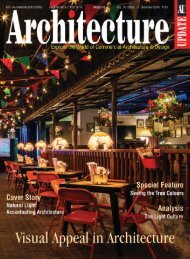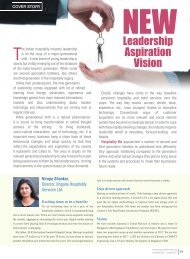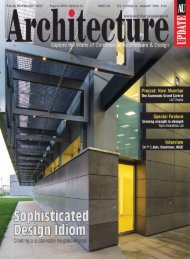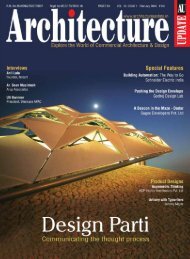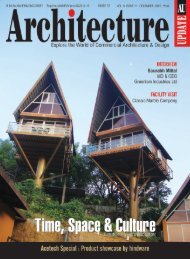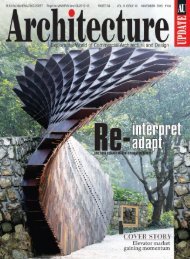Transit Architecture Time for a Drastic Change
Transit Architecture Time for a Drastic Change
Transit Architecture Time for a Drastic Change
Create successful ePaper yourself
Turn your PDF publications into a flip-book with our unique Google optimized e-Paper software.
Special Feature<br />
User-Driven<br />
Airport Design<br />
The change in the aspirations of the users has brought about a huge transition in the design<br />
of airports, wherein apart from regular travel, a host of other activities have been added to the<br />
premise. Also, technological advances that root <strong>for</strong> a seamless experience <strong>for</strong> the users with<br />
efficient utilisation of space.<br />
Nida Chikte<br />
Passengers spend ample amount of time at the airport,<br />
and although after a while, almost all terminals begin<br />
to resemble each other, several basic designs have<br />
evolved over time.<br />
These evolutions came about in response to the increasing<br />
number of passengers, and, additionally due to the increase in the<br />
size of airplanes which was also a driving factor to draw more<br />
passengers to air travel.<br />
This clearly denotes that the transitions are majorly dependant<br />
on the users. Hence, it is a given that with gradual shifts in these<br />
spheres, airport design and functioning is bound to change.<br />
Though most of the airport designs are based on or are inspired<br />
from designs of the past century to some extent, designers are<br />
striving to create modern environments that are in tandem with<br />
the needs and aspirations of the modern traveller, while also<br />
keeping in mind the institutional requirements <strong>for</strong> safety and<br />
security.<br />
SPACES AND EXPERIENCES<br />
Airport designers and architects today are facing challenges in<br />
different aspects of designing, from replacing legacy facilities to<br />
offering the best in aesthetics and user experience. But, due to<br />
limited space, they are often left with minimal options to work<br />
out an efficient circulation pattern that focuses not only on<br />
passenger flow but also better functioning of the space.<br />
Photo Credit: Chatrapati Shivaji International Airport, Mumbai<br />
24 <strong>Architecture</strong> Update February 2018


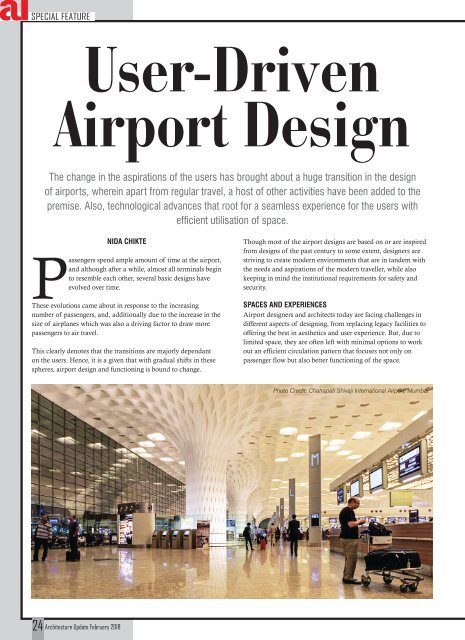
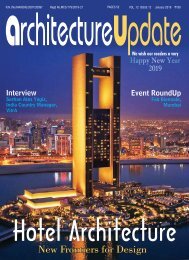
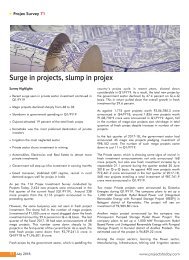

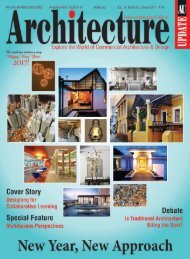
![40-41] Book Review_Sourabh Gupta](https://img.yumpu.com/56720840/1/190x253/40-41-book-review-sourabh-gupta.jpg?quality=85)
